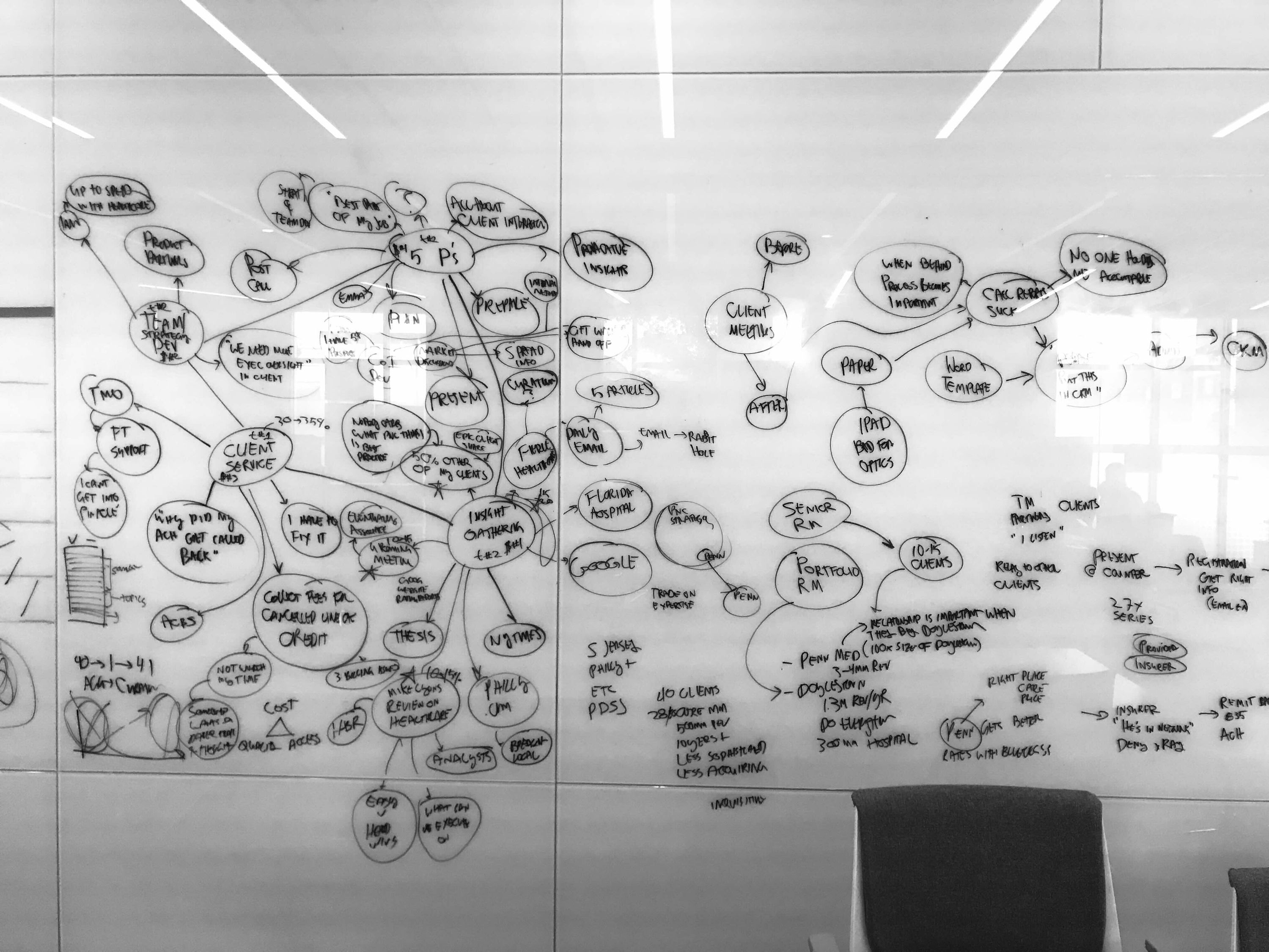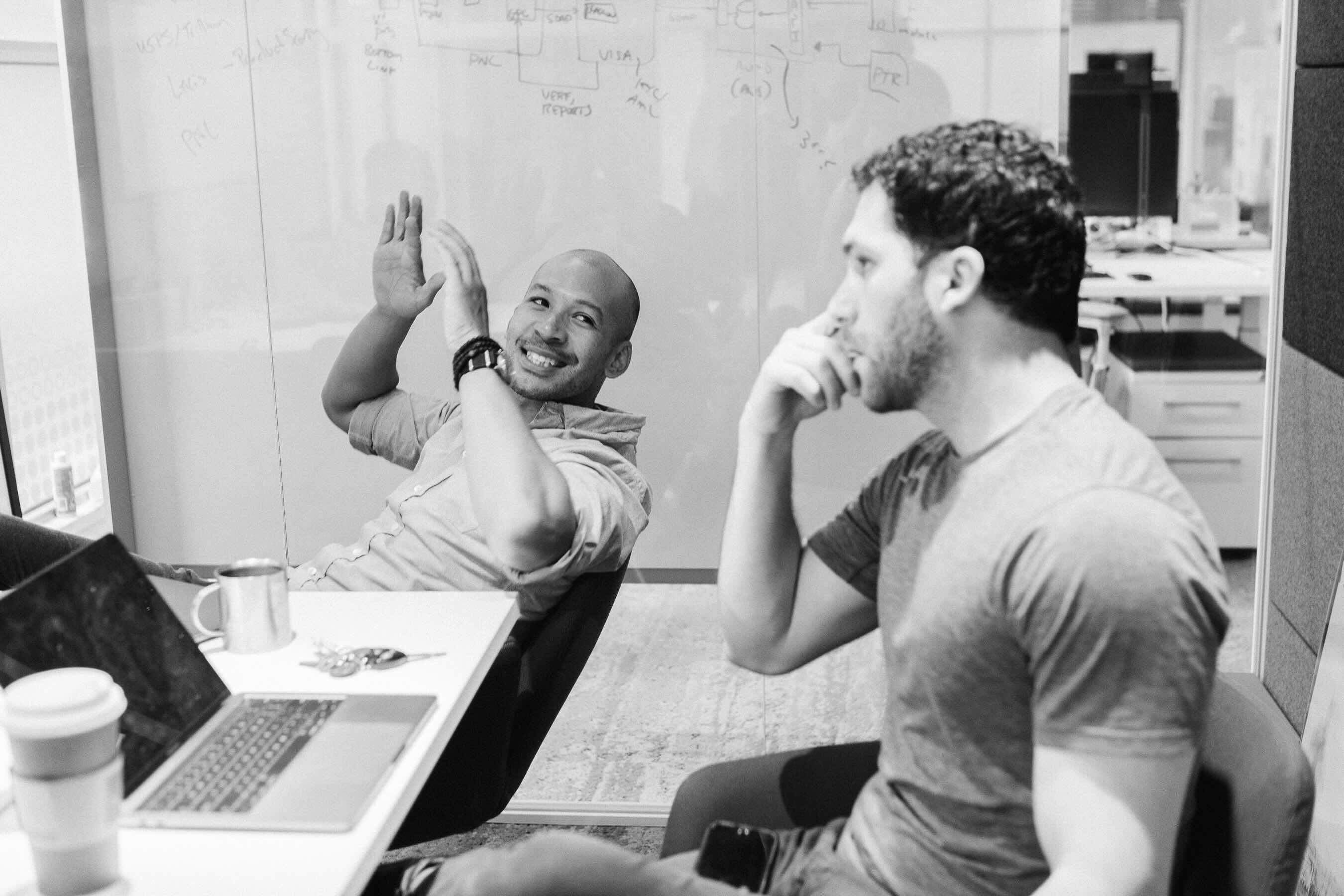Designing a Culture of Innovation
Themes: Process and Planning, Strategy, Technology, Entrepreneurship
Goals: Our team was tasked with developing a venture pipeline of fintech businesses to be grown as arms of the more established company. We were tasked with everything from identifying ideas that had merit, creating plans to build technology, and developing revenue models and go to market strategies.
An Innovation Hub Trying to Find its Footing
TNB, The National Bank, had made huge strides in technology while also keeping their core products moving forward at a conservative pace. This strategy served them well, but they realized to create true innovation — from organizational culture to the tech stack — even the location of the offices needed to change to attract a different kind of talent. The bank, however, still needed to remain at arm’s length. Finlabs, a wholly-owned subsidiary, was created to focus solely on the creation of new financial products and services with the plan to have half of those spin out into separate legal entities, and the other half to go back into the bank and enrich its current offerings.
The first six months were primarily scaffolding activities: putting the right policies and procedures in place to adhere to all the regulatory requirements that go along with being owned by a financial institution. The team grew to about 15 people made primarily of designers, engineers, and operational support staff.
Understanding the Landscape
Stepping into an organization in its infancy, many of its policies and procedures were more cultural norms than anything else: “The Finlabs Way,” as the management team liked to say. Entire structures of the organization were trapped in individuals’ heads, but it didn’t take long to get a high level sense of the motivations of the team and the strategy of the company.
Doug, the CTO, had an enterprise background. He worked and managed large teams of engineers at places like Google. Despite this, or maybe because of the culture at large tech firms, Doug was very connected to the startup culture. He read most of the typical start-up stomping grounds like Hacker News and StackOverFlow.
Doug’s main focus was security. As a part of a large financial institute — a conservative one at that — being responsible for the security of the tech stack made him nervous. When he wasn’t overly stressed about code and data, he mostly was interested in how the team could take on a more “start-up” approach, or more accurately, a start-up culture. He constantly spoke in terms like passion and hunger. But despite his start-up mentality, his trepidation around the tech stack slowed the pace of development, which was at odds with the pressure from the bank to produce.
Lauren, the COO, didn’t have much experience in tech- nology or product. It seemed like the “messy” process, the ambiguity, and the spikey nature of the work made her anxious. She was quick to build full scale processes, which made sense, considering she went from the 50,000 person mothership to a 13 person satellite. Her biggest concerns were that the company wasn’t generating enough business ideas. Despite her lack of experience in technology and innovation, she was the manager for the venture arm of the company.
After understanding the strategic interests of the leadership team, I had conversations with everyone on the venture team. The venture team was tasked with generating ideas and developing them to the point where the startup idea could be presented to the board of Finlabs for funding. This team was comprised entirely of business professionals with MBAs and finance backgrounds and felt the pressure from the entire C-suite to find the “next big thing.” The primary output of their work included Powerpoint slide decks with financial forecasts, macro-economic factors that might influence the business ideas, and potential competitive advantages against other firms in the marketplace.
No Culture for Idea Generation
”…Ideas were cheap, and having start-up and design experience I subscribed to the “fail fast, fail often” mentality. Most of those 100 to 500 ideas would be bad, but hopefully I would find some groupings of concepts and perhaps be able to build off those as a foundation. What I found was that over the course of a year the team of three had a list of 12 ideas and no paper trail of thinking.”
I asked how many ideas had been developed in the 18 months the firm had been operational. They pointed me to a Box folder. I presumed there would be between 100 and 500 in various forms. In my head, ideas were cheap, and having start-up and design experience I subscribed to the “fail fast, fail often” mentality. Most of those 100 to 500 ideas would be bad, but hopefully I would find some groupings of concepts and perhaps be able to build off those as a foundation. What I found was that over the course of a year the team of three had a list of 12 ideas and no paper trail of thinking aside from lengthy PowerPoint decks that seemed to be too much tree and not enough forest.
I asked what the team’s cadence was. There didn’t seem to be any standing meetings, no deadlines, no goals, no specific project initiatives.
Creating New Routines & Rituals
 More often than not, organizational challenges or lack of innovation require time to re-frame the problem space. We get caught in the pattern of looking at problems as the sums of their parts. Design allows us to divide problems and their solution spaces, not just by division of a whole into a set of parts, but by viewing the problem/solution space from different perspectives.
More often than not, organizational challenges or lack of innovation require time to re-frame the problem space. We get caught in the pattern of looking at problems as the sums of their parts. Design allows us to divide problems and their solution spaces, not just by division of a whole into a set of parts, but by viewing the problem/solution space from different perspectives.
This way of dividing a problem/solution space creates new ways to tackle complex problems. The Wilcox Williams library of re-framing tools helps to unravel the complexity of problem spaces in new ways. Exploring several of our in-house heuristics for the challenges at Finlabs, Routines & Rituals seemed most suitable.
To solve the top-of-the-funnel problem was as much a cultural problem as it was a functional one. The firm was created to generate new businesses from within. The staff was equal parts business, product, and engineering, and yet the business end was wholly responsible for generating concepts. That team would sit quietly and work in their silos, not taking advantage of what the designers or engineers could contribute. In addition, the tone of the office felt dry. People had their heads down in their laptops and the unstructured meetings focused on PowerPoint decks instead of artifacts that could spark innovation. To the CTO’s point, if this were a start-up, there would be “passion.”
Rituals inspire. They can create a space and time where individuals seek to contribute as opposed to sitting quietly. They create a mindset that is out of the ordinary day-to-day flow of meetings, emails, and decks.
The solution to both the culture issue as well as the lack of idea generation ended up being a ritual — a party. We called it Pitch Fest. The concept was simple: each week the entire company would hear pitches from employees of new business ideas — served up with beer.

The group had concerns about the quality of ideas, the amount of time it would take to realistically describe ideas in a rhetorical fashion to the rest of the company, and also what would become of the ideas afterwards? Their questions were pragmatic and I didn’t have answers to all of them, but I reassured them that building a culture of idea generation could go a long way, even if most of the ideas didn’t. And furthermore, it was important to prototype the event and iterate on it — the design way. While the company culture was risk-averse, nobody objected to giving it a shot.
The first Pitch Fest happened less than a week later. We engaged other parts of the organization for broader participation and audience feedback. Five new business concepts were pitched — they were fresh, daring, and still very much in their infancy. But most importantly, ev- eryone enjoyed the spirit of the event and felt energized for the first time in months. Through iteration, we also realized that two minutes for an idea with two minutes of questions felt right. We didn’t know what the next step should be but we had more new ideas in one afternoon than the team had produced in months.
Creating a Cadence and Routine
During any kind of innovative problem solving or project development, the whole solution rarely materializes in the beginning. Sometimes you don’t even know step two until you’ve finished step one. After the first Pitch Fest, we were unsure if the problem was going to be a lack of ideas, a lack of company engagement, or a lack of quality.
In this particular case, the question that arose from the client was “now what?” Management had done a great job of recruiting the COO from a large financial institution, the CEO had experience in Silicon Valley start-ups, the CTO was from Google, and the Head of Product from IDEO. The ‘now what’ was to lean on the expertise of the group but with the structure of routines and rituals that ensured ideas could lead to launched businesses with the best thinking in tech, design, management, and operations.
Each week, the Idea Advocate (the employee who pitched it) would talk about the prior week’s progress and would advance the idea with one guiding question for each area: tech, business, design, and operations. The team didn’t need to have a pre-planned step two. The team needed to realize that each idea had its own unique next steps — visioning, prototyping, market analysis, user research, or a combination of those things. This was a team essentially tasked with creating the future and no pre-set plans could compete with the already rich set of values, vision, and experience from the leadership team.
Results
Six months later, the team had doubled in size and received additional funding to launch three new com- panies within the year. Several other fun events have spawned out of Pitch Fest such as a company-wide competition of Microsoft Excel skills, hack-a-thons, and a makerspace.
Pitch Fest not only helped to create a meaningful ritual that fostered an open dialogue between employees, it has also become a successful recruiting and advertising event: potential hires and stakeholders from within TNB are regularly scheduled to visit the offices during Pitch Fest as it’s seen as a highlight of each week. Beyond Pitch Fest, the importance of cadence and a particular type of energy and idea expression has permeated the culture of FinLabs. Each quarter, the business team “pitches” ideas to a set of external advisors. And now, throughout the organization, PowerPoint decks that were typically informational have morphed into pitches themselves: they exhibit risk, fresh ideas, and narratives of new future states.
Summary of Process
Frame: Understanding goals of the subsidiary; familiarization with connections and roles of business units.
Research: A thorough review of existing work and initaitives.
Ideate: Prototyped the Pitch Fest and implemented a plan for iterative improvements involving all stakeholders.
Build: Generated workstreams to incubate ideas that resonated in Pitch Fest and other cross- company events.